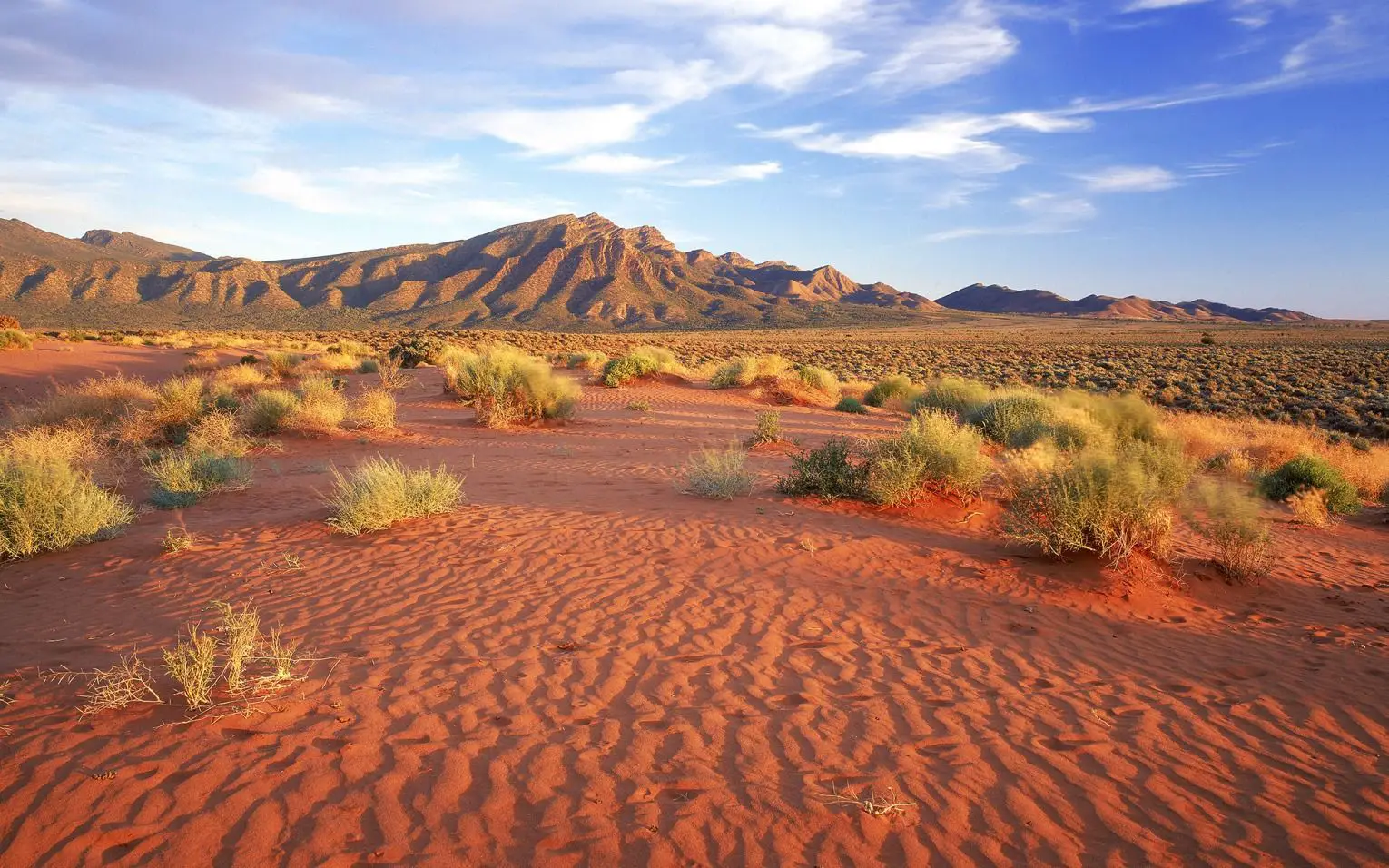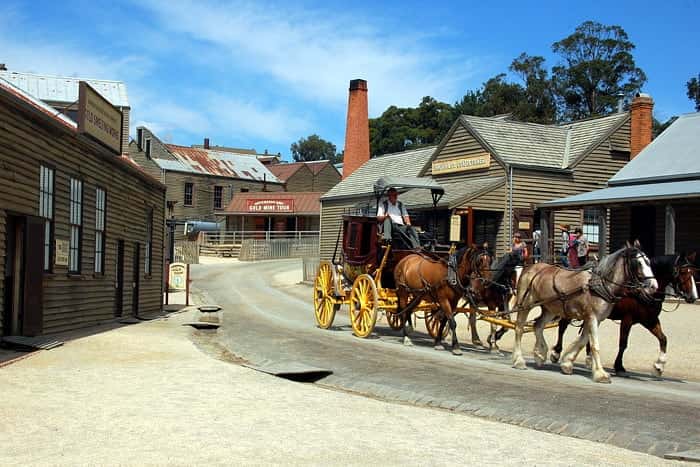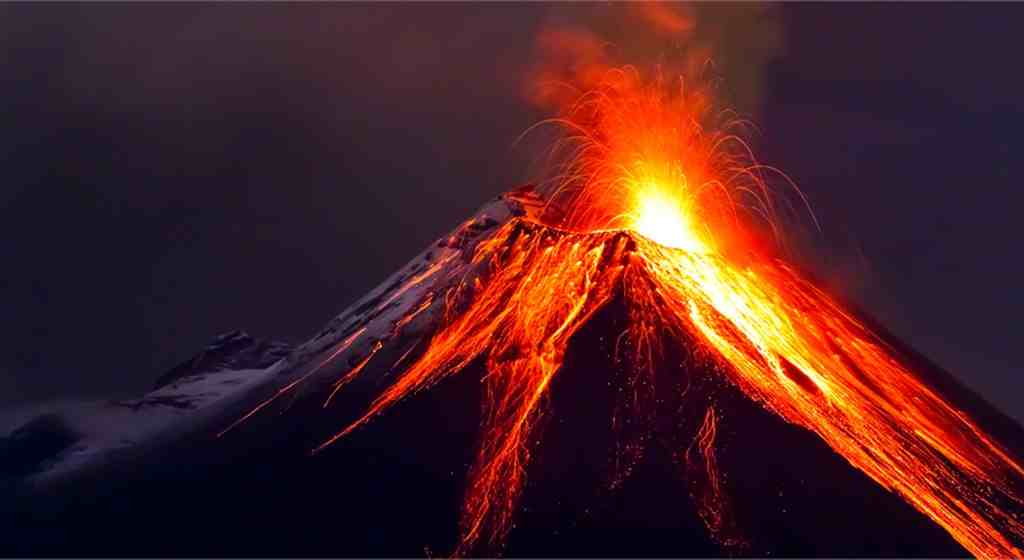Are you wondering if Australia has deserts? The answer is a resounding yes! In fact, more than a third of the continent is covered by desert or semi-arid land. Many of the world’s most iconic deserts can be found in Australia, from the red sands of the Gibson Desert to the vast salt flats of the Great Victoria Desert.
In this blog post, we’ll explain why Australia is home to so many deserts, and explore some of the most fascinating facts about the deserts of the Australian outback. So, if you’re curious about the arid landscape of Australia, read on to find out more!
The Definition of a Desert
Before delving into the question of whether Australia has deserts or not, let’s first establish what constitutes a desert. A desert is defined as a region that receives very little precipitation, usually less than 250 millimeters annually, and is characterized by a barren and arid landscape. It is an ecosystem that is adapted to living under harsh conditions, with limited water and extreme temperature fluctuations.
Deserts can be found in every continent on Earth, and Australia is no exception. Despite its reputation as a lush and diverse continent, a large part of Australia is covered by vast deserts. The harsh conditions of the desert make it a challenging place to live, with only a few hardy plants and animals that are adapted to survive in this arid landscape.
Now that we understand what constitutes a desert, let’s explore the different types of deserts found in Australia and how they contribute to the country’s unique landscape.
The Geographic Location of Australia
Before we delve into whether or not Australia has deserts, let’s first understand the country’s geographic location. Australia is the world’s smallest continent, located between the Indian and Pacific oceans. It is the only continent that is also a country, and is situated entirely in the Southern Hemisphere.
The country’s vast landmass stretches across three time zones, with a coastline spanning 59,736 kilometres. The nearest countries to Australia are Indonesia to the north, and Papua New Guinea to the northeast.
With an area of 7.6 million square kilometres, Australia is the world’s sixth largest country. The continent has a diverse range of landscapes, from rainforests to coral reefs to vast deserts. It is home to several natural wonders, such as the Great Barrier Reef and Uluru (formerly known as Ayers Rock).
Now that we have a better understanding of Australia’s location and diverse landscapes, we can explore the deserts that make up a significant portion of the country.
The Deserts in Australia
Yes, Australia does have deserts. In fact, about 18% of Australia’s landmass is made up of deserts. There are four main deserts in Australia: the Great Victoria Desert, the Simpson Desert, the Gibson Desert, and the Tanami Desert.
The Great Victoria Desert is the largest desert in Australia, covering approximately 348,750 square kilometers. Located in the western part of the country, it is home to a diverse range of plant and animal life.
The Simpson Desert, located in the central part of the country, covers an area of approximately 176,500 square kilometers. This desert is known for its towering sand dunes and unique landscape.
The Gibson Desert, located in the western part of Australia, covers an area of approximately 156,000 square kilometers. It is home to a variety of animal species such as bilbies, wallabies, and dingoes.
The Tanami Desert, located in the northern part of the country, covers an area of approximately 184,500 square kilometers. This desert is known for its red sandy soils and is home to a range of desert-adapted flora and fauna.
Despite their harsh and arid environments, these deserts are home to a range of unique and fascinating species.
The Great Victoria Desert
The Great Victoria Desert is the largest desert in Australia and the second-largest in the world, spanning an area of 424,400 square kilometers. It is located in the southern part of Western Australia and extends into South Australia. The desert is characterized by its red sandy terrain and is home to unique flora and fauna.
The Great Victoria Desert has a very arid climate, with an average rainfall of 200mm per year. The temperatures can range from below freezing at night to over 40 degrees Celsius during the day, making it a challenging environment to survive in. Despite the harsh conditions, the desert is home to several species of plants and animals, such as spinifex grass, acacia shrubs, dingoes, red kangaroos, and several species of reptiles and birds.
One of the most unique features of the Great Victoria Desert is the Great Victoria Desert Wilderness Park. This protected area spans over 1,900 square kilometers and is home to several geological formations and landscapes. The park also offers a unique opportunity to explore the desert’s ecosystem and observe its inhabitants in their natural habitat.
The Simpson Desert
The Simpson Desert is one of Australia’s most famous deserts, known for its stunning red sand dunes and incredible landscapes. Covering an area of approximately 143,000 square kilometers, it’s the fourth largest desert in Australia. Located in the heart of the continent, it’s surrounded by the MacDonnell and Musgrave Ranges to the west, and the Strezlecki and Tirari deserts to the south and east.
The Simpson Desert is home to a diverse range of wildlife, including various species of reptiles, birds, and mammals. You may even spot the iconic red kangaroo, as well as the dingo and the bilby. The vegetation here is sparse and adapted to the harsh desert climate, with spinifex grass and eucalyptus trees being the most common.
One of the most popular ways to explore the Simpson Desert is through the Simpson Desert crossing, a challenging but rewarding off-road adventure. The crossing covers approximately 1,100 kilometers and takes you through some of the most breathtaking landscapes in Australia.
If you’re a nature lover, a visit to the Simpson Desert is a must. From its unique flora and fauna to its incredible natural beauty, it’s a place like no other.
The Gibson Desert
The Gibson Desert is located in Western Australia and is one of the largest deserts in the world, covering an area of over 155,000 square kilometers. It is situated between the Great Sandy Desert to the northwest and the Great Victoria Desert to the southeast. The desert is named after Alfred Gibson, a member of the explorer Ernest Giles’ 1874 expedition.
The landscape of the Gibson Desert is characterized by sand dunes, rocky outcrops, and spinifex grasslands. The dunes can reach up to 200 meters in height and are constantly shifting due to wind erosion. The desert is home to a variety of wildlife, including red kangaroos, echidnas, and perenties (a type of monitor lizard).
The indigenous Martu people have lived in the Gibson Desert for over 30,000 years and have a deep understanding of the environment and its resources. Today, they continue to hunt and gather traditional foods and maintain their connection to the land.
Although the Gibson Desert is inhospitable to most human habitation, there are a few small settlements and mining operations in the region. The remote and rugged landscape makes it a popular destination for adventurers and those seeking solitude and a unique experience in the Australian outback.
The Tanami Desert
Located in the Northern Territory and Western Australia, the Tanami Desert is one of Australia’s most remote deserts. Covering an area of around 184,500 square kilometers, it’s the country’s second-largest desert. Despite being remote, the desert is home to a rich variety of plant and animal species that have adapted to survive in this harsh environment. Some of the animals found here include the Mulga Snake, the Great Desert Skink, and the Sand Goanna.
One of the most notable landmarks in the Tanami Desert is the Wolfe Creek Meteorite Crater. This impressive crater measures 880 meters in diameter and was formed by the impact of a meteorite around 300,000 years ago. In recent years, the desert has also become a site for gold mining, and several mining towns have been established in the area.
The Tanami Desert experiences extreme temperatures, with hot days and cold nights being the norm. It’s important to note that traveling in this region can be dangerous, especially for those who are not prepared for the harsh conditions. Nevertheless, the desert’s natural beauty and unique ecosystem make it a must-visit destination for adventure seekers.
The Climate of Australia’s Deserts
As you might expect, the climate in Australia’s deserts is hot and dry. Due to their location in the interior of the continent, these deserts are subject to intense heat during the day and cool temperatures at night. In fact, it’s not uncommon for temperatures to reach 40°C (104°F) during the day, and drop down to freezing at night.
The lack of rainfall in these regions means that there is very little plant life. Instead, the landscape is dominated by sand dunes, rocky outcroppings, and sparse shrubs. In some areas, you might even see salt pans where there is a high concentration of salt in the soil.
Despite these harsh conditions, there are still animals that manage to survive in Australia’s deserts. Some examples include kangaroos, wallabies, dingoes, and snakes. In fact, the lack of vegetation in these areas makes it easier for predators to hunt, as their prey has fewer places to hide.
Overall, the climate in Australia’s deserts is certainly challenging for humans and wildlife alike. However, it’s also an important ecosystem that deserves our attention and protection.
The Flora and Fauna in Australia’s Deserts
Despite their harsh conditions, Australia’s deserts are home to a surprisingly diverse range of plant and animal life. The flora and fauna of these regions have evolved unique adaptations to survive in the arid environment.
Plants in the desert typically have deep roots and waxy leaves to conserve water. Acacia trees, spinifex grasses, and eucalyptus trees are common in Australia’s deserts, while wildflowers burst into colorful bloom after rare rainfall events.
In terms of wildlife, the deserts are home to many species that are found nowhere else on Earth. Kangaroos, wallabies, and dingoes are common in the desert regions, as well as reptiles such as snakes and lizards. Small mammals such as marsupial mice and hopping mice also live in the desert.
Birdlife is abundant in the deserts, with species such as the wedge-tailed eagle, emu, and spinifex pigeon thriving in the arid environment. Other animals like spiders, scorpions, and centipedes have developed unique ways of finding food and water in the desert, often hiding during the day and hunting at night.
Overall, Australia’s deserts are an important habitat for many unique and fascinating species that have adapted to the challenging conditions of this beautiful and diverse continent.



